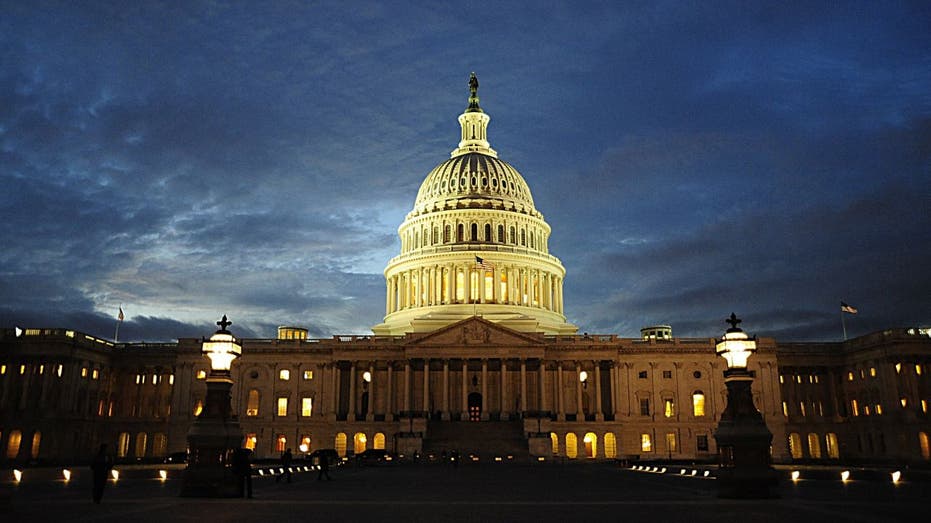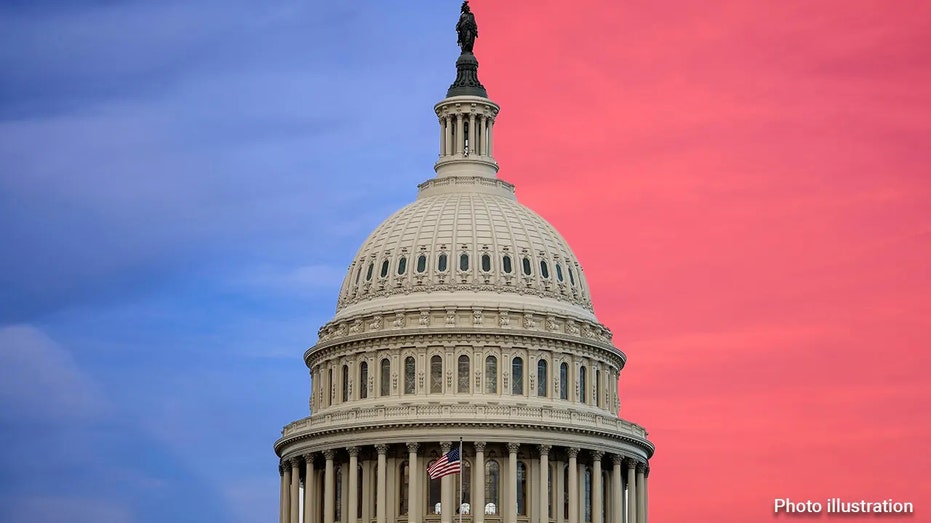Brian Riedl of the Manhattan Institute discusses his bipartisan plan for stabilizing the national debt to prevent a coming credit crisis.
of America the national debt has reached $35 trillion for the first time late last month, and with huge budget deficits poised to continue pushing the debt to new astronomical heights for decades to come, the economist has proposed a two-pronged strategy stabilize credit and avoid future credit problems.
“If we want to avoid a debt crisis, big changes have to be introduced in the next few years, otherwise the debt is growing too much, too many children are retiring to accept the changes, the cliff is too high ,” Brian Riedl. senior fellow at the Manhattan Institute who focuses on budget, taxation and economic policy, told FOX Business in an interview.
The share of national debt held by the public continues this year to equal the size of the US economy in terms of gross domestic product (GDP), and the UN Budget Office projects it will reach 166 % of GDP in 2054. , based on the current law. Riedl’s body A 30-year budget plan it would stabilize the debt-to-GDP ratio at 100% of GDP by combining tax and spending changes that would require a compromise between the two.
“We cannot deal with long-term deficits in isolation,” Reidl said. and problem solving. So, the first thing you need is for both parties to hold hands, jump together and put all the strategies in place. It is clear that Washington is nowhere near that level, where the two parties will accept the problem of weakness, much more than unity. “
NATIONAL DEBT TRACKER: AMERICAN TAXPAYERS (YOU) ARE NOW ON THE HOOK FOR $35,085,786,495,843.24 AS OF 8/7/24
Riedl’s proposal would increase taxes on businesses and high-income households while reforming it. Social Security and Medicare to reduce their spending, which is rising rapidly as the programs’ funding systems are under pressure. An average of 10,000 baby boomers reach retirement age per day, while the ratio of workers to retirees has fallen below 3-to-1 and is approaching 2-to-1 in years the next decade, leaving fewer taxpayers in the workforce.
The tsunami of retirees and the workforce is reducing the trust funds of the two programs, which are expected to be introduced in the 2030s and will cause reductions in automatic benefits if that happens. In total, the two entitlement programs face a $124 trillion shortfall over the next 30 years.
PUBLIC SERVICE FEES TO CUT $325 PER MONTH STARTING 2033 WITH NO CHANGES: ACTUARIES

The US national debt is on track to equal the size of the economy this year. (Karen Bleier/AFP via Getty Images)
“Social Security reform is very clear. My proposal would gradually increase the retirement age by two years over the next two decades, and even increase limited benefits for people low-income seniors by reducing the benefits of high-income seniors where Social Security would be able to do so. to about $24,000 a year in retirement,” Riedl he explained.
“Medicare is more complicated because you have to adjust for health [of the] economy first. My plan would move Medicare more into a choice and competition system, where seniors would choose among competing plans, and this would reduce costs by about 8% when they -insurers are competing for your business,” Riedl said.
Riedl’s plan covers discretionary spending programs and limits annual growth in those deficits while maintaining a balance between defense and nondefense programs. Increases the top corporate tax rate by 3.6%, raises the top tax rate by 2.6% and Medicare income tax rate by 1%. But it doesn’t eliminate the Social Security tax because it would push tax rates into the mid-60s for many high-income earners.
US NATIONAL DEBT WILL COME TO RECORD LEVELS WITHOUT CHANGE, RAISING DEBT PROBLEMS.

Economist Brian Riedl’s proposal calls for a combination of two currencies and tax reforms to stabilize the national debt. (Fox News/photograph)
Absent federal lawmakers to take a leadership role in budget reform in the near future, Riedl said that for budget reforms to happen, voters will need to be “very concerned about the deficit issues, which will not happen until they start to suffer.”
“The problem is, once you start hurting — once the credit market stops lending to us, interest rates go up, inflation goes up, the stock market starts going down — then you have voters’ attention, but it is also too late to do this in a painless way,” he explained.
Riedl said there is a window of about five years to implement fiscal reforms to stabilize, adding, “If we fail that test, the reality is. debt problems it’s hard to predict.”
HOW MUCH IS ONE DEAL?
“It could happen in five years, it could happen in 10 years, it could happen in 20 years. We don’t know the exact day it will happen, but we know it will happen. happen because there is no way for Washington to borrow about $200 trillion over 30 years to pay for these deficits,” he explained. “The financial markets we will not be able to provide so many loans at a reasonable interest rate.
Economists’ estimates of how much debt-to-GDP could lead to credit crunches vary. Some estimates selected by the Congressional Research Service had a “danger zone” from 80% to 200%, while the Penn-Wharton Budget Model said last fall that it would not exceed 200 % of GDP “even under today’s generally favorable conditions.”
GET THE FOX BUSINESS AT CHECKOUT BY CLICKING HERE
“My hope is that we don’t delay reform until finally the bond market forces change by saying we can no longer lend Washington more than $200 trillion over 30 years, at which point Washington will have to cut spending of money and raising taxes significantly.” Riedl said.
#Economist #offers #bipartisan #plan #avoid #financial #crisis #stabilizing #Americas #growing #national #debt